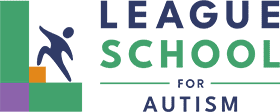The SCERTS® Model
Overview
The SCERTS® Model (Prizant, Wetherby, Rubin, Laurent and Rydell, 2006) is a research-based educational approach and multidisciplinary framework that directly addresses the core challenges people with Autism and related disabilities and their families face. It provides a comprehensive approach to effectively support students in different social environments by prioritizing goals in social communication, emotional regulation, and transactional supports.
SC - Social Communication: the development of spontaneous, functional communication, emotional expression, and secure and trusting relationships with children and adults
ER - Emotional Regulation: the ability to maintain a well-regulated emotional and physical state to cope with everyday stress, and to be most available for learning and interacting
TS – Transactional Support: the development and implementation of supports to help partners (family, peers, staff, etc.) respond to the child’s needs and interests, modify and adapt the environment, and provide tools to enhance learning (e.g., picture communication, written schedules, and sensory supports. etc.).
The SCERTS Model involves a carefully coordinated multidisciplinary approach to assessment and educational programming that includes the student, caregivers, educators, speech-language pathologists, occupational therapists, clinicians, and behavior therapists.
The SCERTS Model provides a systematic method that ensures that specific skills and appropriate supports are selected and applied in a consistent manner across a student’s day. This process allows families and educational teams to draw from a wide range of effective practices that build on the students’ existing knowledge and strengths, providing a coordinated program to address the core challenges of neurodivergent students.
Why the SCERTS Model?
The SCERTS Model is a framework that enhances existing teaching methodologies by providing a consistent focus on individual strengths and challenges, proven support techniques for both educators and families, a common language, and a research-based assessment process.
Specifically, the SCERTS Model provides League School with:
A framework under which a variety of teaching approaches can be used. SCERTS supports use of a variety of teaching methodologies (e.g., Floortime, progressive ABA, the TEACCH model, etc.), strategies, and techniques to best meet the needs of each individual student;
- A comprehensive assessment process to help teams more accurately measure a student’s progress and identify necessary supports that all partners can use with the student to facilitate success;
- A common, neurodiversity-affirming vocabulary to utilize throughout school, home and community settings; and
- A focus on developing specific skills that are relevant and meaningful to each student by teaching these skills within the context of natural routines.
What distinguishes the SCERTS Model from other programs?
The SCERTS Model prioritizes social communication and emotional regulation skills to best support Autistic individuals. These skills are the foundation upon which our students learn how to be effective, well-regulated communicators in order to productively engage throughout their day. The SCERTS Model encourages teaching these skills in the context of natural routines to promote generalization across environments and partners.
This model utilizes observations of student at different times and in a variety of settings to provide a holistic view of the student, allowing us to develop meaningful and specific goals and objectives that are student-centered. The SCERTS Model is research-based and further supports its approach by providing manuals outlining proven program planning, assessment, and intervention techniques.
The SCERTS Model can be used with children and older individuals across a range of developmental abilities. It is a lifespan model that can be used from initial diagnosis, throughout the school years, and beyond. It can be adapted to meet the unique demands of different social settings for younger and older individuals with Autism including home, school, community, and ultimately vocational settings.
How do you measure progress?
The SCERTS Model includes a well-coordinated assessment process that helps a team measure the child’s progress and determine the necessary supports to be used by the child’s communication partners (educators, peers, and family members). This assessment process ensures that:
- functional, meaningful, and developmentally-appropriate goals and objectives are selected;
- individual differences in a child’s style of learning, interests, and motivations are respected;
- the culture and lifestyle of the family are understood and respected
- the child is engaged in meaningful and purposeful activities throughout the day;
- supports are developed and used consistently across partners, activities, and environments; and
- a child’s progress is systematically monitored over time
How is the SCERTS Model used?
To support implementation of student-specific strategies and promote generalization of skills, League School specialists (e.g., speech-language pathologists, occupational therapists, clinicians, board certified behavior analysts, etc.) provide services using a consultative model. This model includes consultation with the student’s team (both inside and outside of school) to provide recommendations to support an individual’s needs, as well as providing direct instruction within the context of students’ natural routines across the school day. Specialists address specific skills in a small group setting (e.g., dyads, classroom grouping, etc.) to ensure that these skills are practiced and demonstrated across partners. Under the SCERTS Model multidisciplinary guiding principles, the entire team works collaboratively to target skills to promote student success and quality of life.
For More Information About SCERTS
To learn more, visit the SCERTS website at www.scerts.com.
